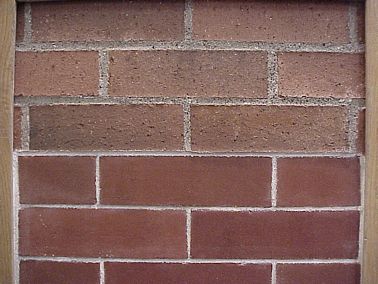 |
Common Bond in BrickworkUpper: Modern, stiff mud, wire cut standard 7-5/8 face brick pointed with mortar struck flat or as a flush joint to show aggregates.
Mortar Mix: 1 part Ecologic™ Mortar G #DGM 200 (brown/grayish) 2lbs washed coal flecks, (or medium grade slag flecks). (2lbs)
Lower: Historic, stiff mud, wire cut smooth Philadelphia Brick, an 8-1/4 face brick with Buttered joint.
Mortar Mix: Use either Ecologic™ Butter Joint premix or 1:2 mixture of NHL 2 to Marble Dust by Volume 1/4 part marble dust screenings.
Finish Tools – 3/8″ slicker, 1/8″ slicker, 1/16″ slicker |
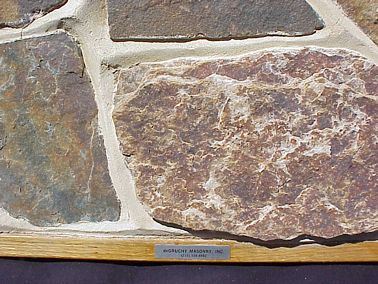 |
Carolina variegated sandstone pointed in a Beveled Ridge jointMortar Mix: Ecologic™ Mortar G #DGM 50
Finish Tools- 3/8″ slicker, 1/2″ slicker |
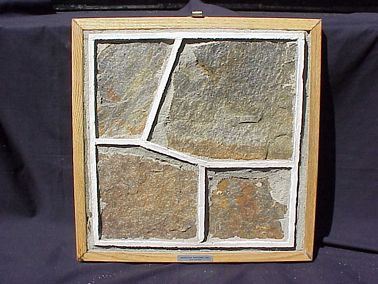 |
Variegated siliceous Iron stone pointed in a Raised and Ruled White Ribbon joint over a neutral colored background mortar brushed flatUpper: Modern, stiff mud, wire cut standard 7-5/8 face brick pointed with mortar struck flat or as a flush joint to show aggregates.
Mortar Mix: 1 part Ecologic™ Mortar G #DGM 200 (brown/grayish) 2lbs washed coal flecks, (or medium grade slag flecks). (2lbs)
Lower: Historic, stiff mud, wire cut smooth Philadelphia Brick, an 8-1/4 face brick with Buttered joint.
Mortar Mix: Use either Ecologic™ Butter Joint premix or 1:2 mixture of NHL 2 to Marble Dust by Volume 1/4 part marble dust screenings.
Finish Tools – 3/8″ slicker, 1/8″ slicker, 1/16″ slicker |
 |
Diopsidic sandstone (Serpentine-like (green) pointed in a Cobweb Ribbon (cobweb also Serpentine-like (curves)!)Mortar Mix: Ecologic™ Mortar G #DGM GREY
Finish Tools- 1/2″ slicker, Wire Duster and 1/2″ ribbon jointer and a loop. |
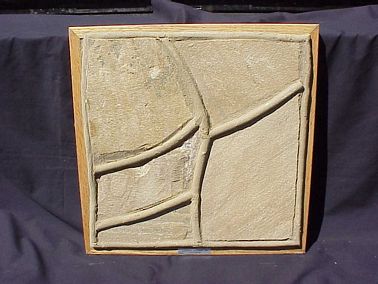 |
Limonitic sandstone (yellowish brown) pointed in a Grapevine Stone joint, (not to be confused with the commonly named grapevine joint in brickwork where in that case an incised 1/8 line is impressed into the wet mortar when striking with a grapevine jointer tool.)Mortar Mix: 1/2 part Ecologic™ Mortar G #DGM 100 1/2 part Ecologic™ Mortar G #DGM 250 (greenish ochre-brown colored).
Finish Tools- 1/2″ slicker, 1/2″ Stone Grapevine Jointer |
 |
Appalachian Bluestone (a sedimentary sandstone) pointed in a **Beveled Ridge joint which had the yellow sand aggregates exposed for a weathered appearanceMortar Mix: 1 part Ecologic™ Mortar G #DGM 100 (light brown/mud colored) 2lbs yellow concrete sand (Inclusions of lime chunks were also added along with the sand aggregate to duplicate the imperfection often seen in weathered mortar where the original lime slaking left bits of calcium hydroxide not fully broken down in the putty and where weathering reveals such bits. This denotes a “hot mix was used and fresh slack lime had sand added then used immediately). Mix NHL 5 and water, let it harden a week and break it up to add small bits. |
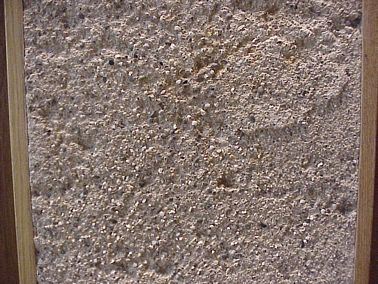 |
Exterior, weathered, (by exposing aggregates) brown coat plaster (AKA stucco, render). Inclusions of lime chunks (see note above) were dashed into the wet plasterMortar Mix: 1 part Ecologic™ Mortar G #DGM 100 (light brown/mud-colored) 2lbs brown concrete sand.
Tools for Panel 6- 3/8″ slicker
Tools for Panel 7- Stucco and Harling trowels, Churn brush and garden hose with water to expose aggregate the next day. |
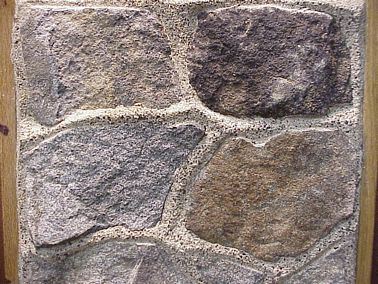 |
Pennsylvania’s Rockhill Granite, (trappe rock), pointed in a **Beveled Ridge joint which had the reddish/brown sand aggregates exposed for a distressed and weathered appearanceMortar Mix: 1 part Ecologic™ Mortar G #DGM 100 (light brown/mud colored) 1-3/4 lbs brown concrete sand 1/4 lb medium grade slag flecks.
Finish Tools – 1/2″ slicker, Churn brush and garden hose with water to expose aggregate the next day. |
 |
Philadelphia’s Chestnut Hill Stone (Wissahickon Schist), pointed in a **Beveled Ridge jointMortar Mix: 1 part Ecologic™ Mortar G #DGM 250 (greenish ochre-brown colored) 1 ounce of mica fleck inclusions added to simulate the Pennsylvania’s Schuylkill River sand which has naturally occurring shist fleck inclusions.
Finish Tools – 1/2″ slicker, Churn brush
Note to those in Mt. Airy Region of Philadelphia- The above mix, or substituting DGM 200, is a good match for most Wissahickon Schist repointing work needed on buildings built before 1940. |
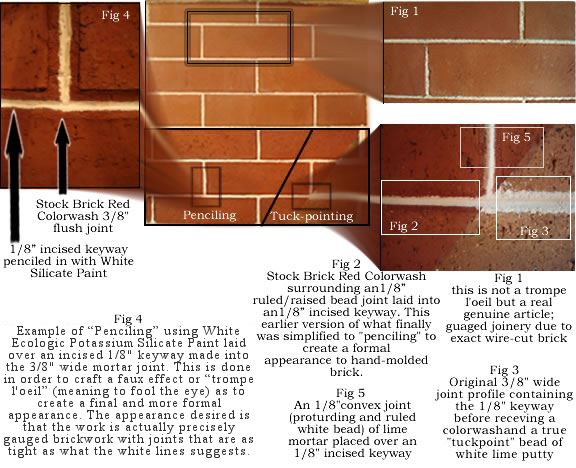 |
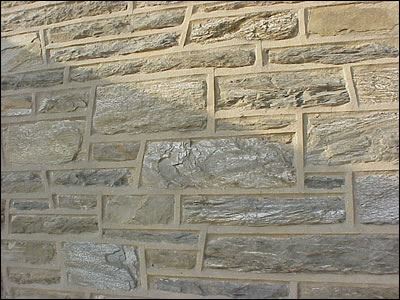 |
Overhung Ridge Joint
The Overhung Ridge joint is often misinterpreted as one of the ribbon joints mentioned above. Overhung Ridge is a joint that meets the flush face of the semi-squared block of stone above it, having a trailing edge to the stone above it and a ruled edge with a inward bevel meeting to the stone below it. Usually the left side of the head joint has the trailing edge and the right side of the head joint, the ruled edge with bevel.
Ecologic™ Mortar G #DGM 250 (greenish ochre-brown colored)
Tools – 1/2″ ribbon jointer, loop, and a level
|
| Note that often in Overhung Ridge pointing of snecked rubble stonework, the head joints can be perfectly perpendicular with the horizontally level bed joints or the head joints are angled from the level bedding plane. From a distance, this joint appears to make the semi-squared stones seem more squarely shaped. It also makes the joints look a lot like a ribbon joint, which they are not. Although no painted lime lines or additional material is added on the surface of the ruled lines, the tightly compressed flat area of the Overhung Ridge joint typically dries lighter than the trailing and ruled edge which is scraped away to bleed into the surrounding texture of stone. This gives the appearance of a painted ribbon joint, but is not to say that in some instances pencylling was not still carried out. In Chestnut Hill, Philadelphia many original Overhung Ridge pointed buildings throughout Germantown Avenue and all the surrounding side streets can still be viewed. |
 |
The grapevine joint in stonework is a protruded bead. Easton, PA
Note to those in College Hill and the Easton, PA area: 1 part Ecologic™ Mortar G #DGM 200 (brown/grayish color) and 2lbs fine or medium grade slag flecks, (depending on the original mortar), is a good match for most mortar repointing work required on buildings built in this region before 1940. |